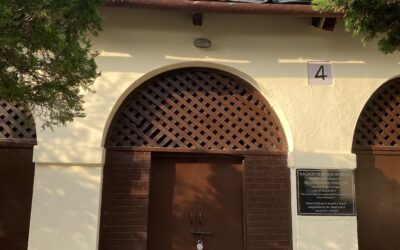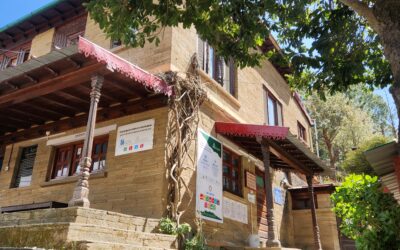A local resident with a radio set
As an India Fellow, I began my journey to becoming a socially conscious leader by working with and for people. As a part of the fellowship, each fellow works with an organization towards a social issue for 1.5 years. I’m working with Shramik Bharti in Kanpur, Uttar Pradesh.
Shramik Bharti is dedicated to empowering the poor and underprivileged, with a focus on women and children. My role here is to assist various teams with documentation and reporting processes to make sure we have a repository of case studies, event narratives, reports, and project impact assessments.
The community radio station is one of the initiatives that grabbed my attention. It is like your local channel that caters to the interests of people living around, by broadcasting programs curated and listened to by them.
Radio in the community, for the community, about the community and by the community.
The name of the station is Waqt Ki Awaaz. It is operating since 2009 in Kanpur. Through this platform, we reach out to 307 villages and 5 lakh people within 10 kilometres of radius. The station has a history of working closely with the community on issues such as access to finance, rainwater harvesting, sustainable agriculture and family planning. In essence, the core idea is to have a space for open dialogue, information sharing, and citizen action.
Shramik Bharti had conducted a study in 2010 in these villages to estimate the need for community radio. As a result, we found out that people had no or less access to any media. The other digital and print mediums like magazines, television, newspapers, and other radio stations hardly reach people here in remote rural areas. Due to poor infrastructure, newspapers reach only the villages that are on the main roads. People can’t watch TV because of electricity cuts. Commercial FM channels don’t cover local news and topics of interest to people here. They neither have the space nor the capacity to do so.
To give you a background on community radio stations, in its 1995 judgment in the case Union of India vs. Cricket Association of Bengal, the Supreme Court of India declared that “airwaves are a public property” and that their use must be governed and regulated by a public authority in the interests of general public as well as to prevent the violation of their rights.
In 2006, the government recognized the need for community-based media initiatives by passing a regulation that provides a license to NGOs to operate such stations to broadcast programs within a 10 km radius of the radio tower.


The surrounding countryside on the way to the radio station is serene. With curiosity, I entered the premises to experience a calm and peaceful view. The weather that day also complemented it with a mild breeze and clouds. The building is newly constructed. It has a long verandah (front yard) transformed into a mini kitchen garden with vegetables, fruits, and flowers. Then there is a training room, a broadcasting room also known as the control room, an editing room, a recording room, a room for meetings and discussions, and space to stay. The entire campus runs on solar energy powered by solar panels installed on the terrace.
The full-time team of Waqt ki Awaaz includes five people including the program manager, technicians, editor and radio jockey. There are a bunch of field volunteers known as Grameen reporters who go to the villages to record content in the form of stories, folk songs and opinions. They also conduct awareness camps, assist with narrowcasting (more on this below), taking feedback and identifying interest topics for programs. In this way, they have been able to foster conversations and support individuals who are ready to take action on specific issues.




Narrowcasting is a method of disseminating radio programs to a target group. A volunteer goes to listener groups formed in the villages at a pre-decided date and runs the program on CD/MP3 players. The volunteers then hold a short discussion session about the program and gather community’s feedback. It helps in developing better programs.
The broadcast timings are fixed i.e. from 10 AM – 2 PM and 6 PM – 10 PM. Most of it is recorded sessions and a few live sessions happen when a particular resource person interacts with the audience through radio. These are topic based. Currently, we are working on a digital rights awareness project, getting to know about the needs of the community and ways in which we can cater to them.


Until now, the concept of community radio was new to me. Its functions are unique and specific. More important than anything, it makes people feel that they are the owners of the station. I saw many of them walking in without any prior notice to talk about their own rights and therefore, be more aware.




0 Comments